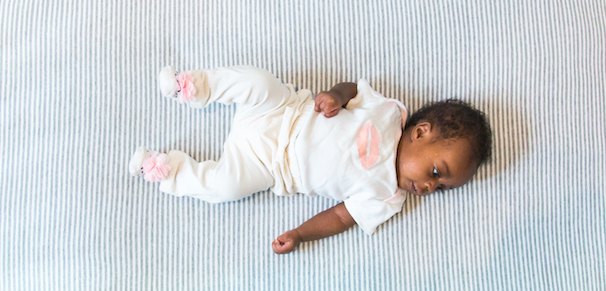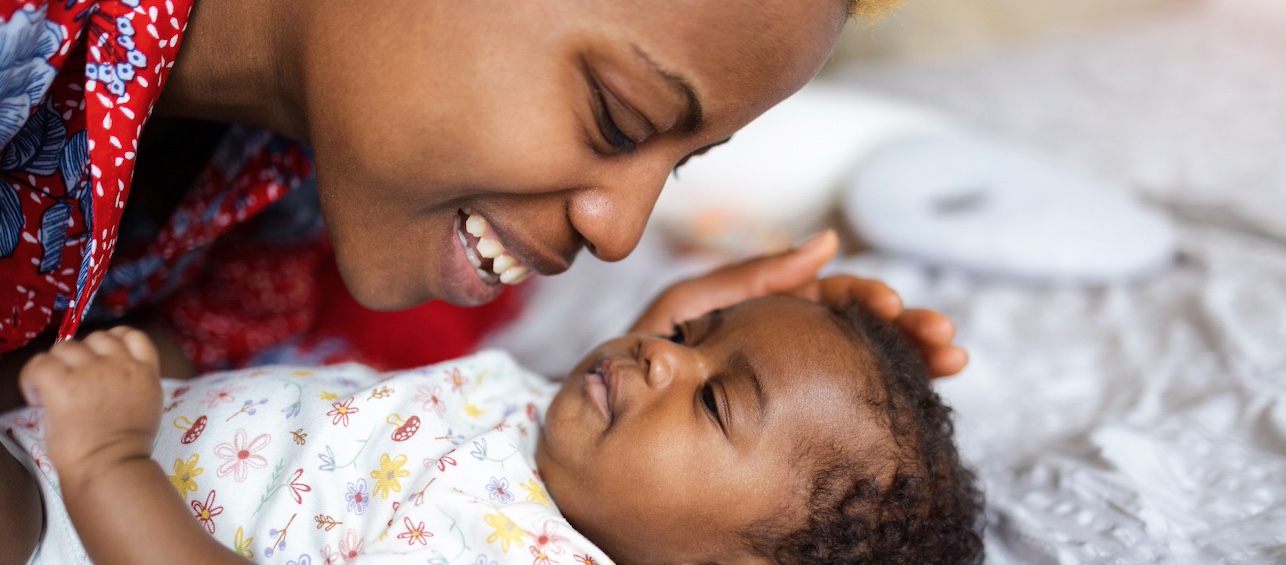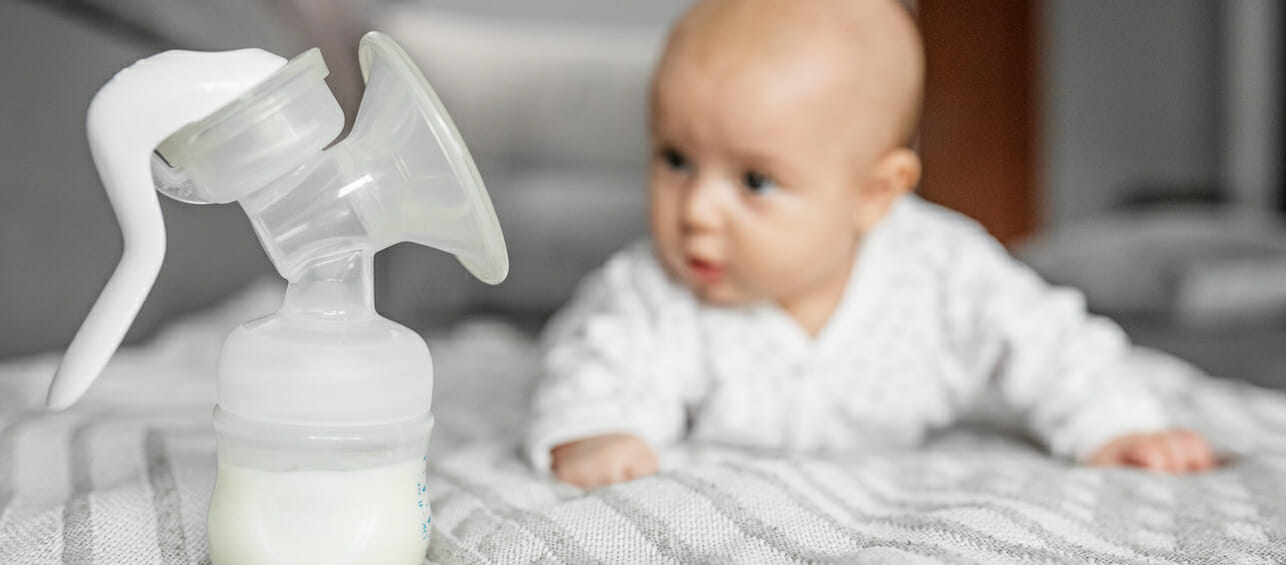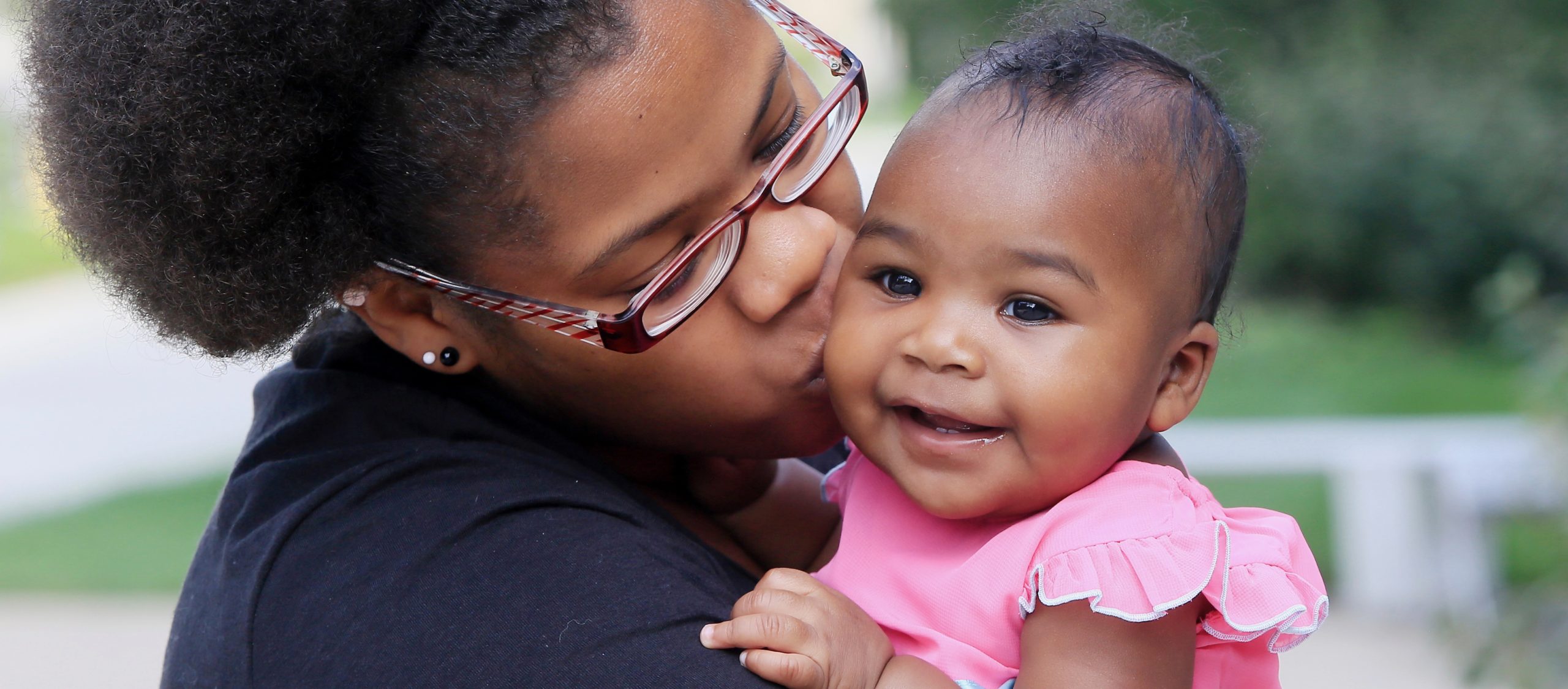The rate of sleep-related infant deaths has declined more than 50 percent since the 1994 Back-to-Sleep campaign was launched, encouraging parents to place infants to sleep on their backs. Sleep-related infant deaths still claim around 3,500 lives in the United States every year.
In the past, sudden infant death syndrome, or SIDS, was most commonly talked about in relation to sleep-related infant deaths. Experts have begun classifying these deaths more specifically, in order to learn from them and help prevent them. The term now used to describe the range of sleep-related infant deaths is sudden unexplained infant death, or SUID. Falling under that umbrella include infant deaths due to:
- Sudden infant death syndrome (SIDS)
- Accidental suffocation or strangulation in bed (ASSB)
- Unknown causes
While these deaths are unpredictable, you can take several steps to reduce the risk by following safe sleep practices.
THE ABCS OF SAFE SLEEP
The easiest way to remember safe sleep practices for your infant is to use the A-B-C acronym. Babies should sleep:
- Alone
- On their Backs
- In a Crib
CREATING THE SAFEST SLEEP ENVIRONMENT
The American Academy of Pediatrics (AAP), the authority in SUID prevention and safe sleep, offers several additional recommendations for creating the safest sleep environment possible for your baby. Follow these guidelines to decrease the risk of sleep-related infant death:
- Always place your baby on his or her back for every sleep time, both naptime and nighttime. Make sure other caregivers and family members do the same.
- Always use a firm, flat sleep surface for your baby. Your baby should sleep in a crib, portable crib, bassinette, or play yard that meets the safety standards of the Consumer Product Safety Commission. Make sure the crib mattress is designed for your specific crib and that it fits snugly with a tightly fitted sheet. Babies should never sleep in car seats, carriers, strollers, swings, or slings. If your baby does fall asleep in one of these, move them to a firm sleep surface on their back as soon as possible.
- Never sleep with your baby. Falling asleep with your baby in bed with you or even in other spots can increase the risk of sleep-related infant death by up to nearly 70%. This includes couches or chairs with soft cushions. If you feel drowsy or like you may fall asleep while holding your baby, move them to their crib.
- Practice room sharing, but not bed sharing. We understand that some cultures highly value the practice of bed sharing. Several popular parenting approaches, including attachment parenting, encourage bed sharing along with other specific parenting practices. Due to the risks of suffocation, strangulation, and SUID, our recommendation is to avoid bed sharing entirely. If you do choose to bed share, talk with your child’s doctor about how to keep your baby as safe as possible during sleep. Instead of bed sharing, consider room sharing with your baby. Room sharing is when your baby’s sleep area (crib, portable crib, bassinette, or play yard) is placed in your bedroom, close to your bed for at least the first six months. Room sharing is recommended by the AAP because it is much safer than bed sharing, and it can reduce the risk of SIDS by as much as 50%.
- Do not place loose or soft objects in your baby’s sleep space. Do not use fluffy blankets or other soft materials under or around your baby when going to sleep, and do not use wedges or other sleep positioners. Keep stuffed toys, bumper pads, pillows, and other loose items out of the crib.
- Feed your baby breast milk if possible. Breast milk, either through breastfeeding or feeding expressed breast milk, reduces the risk of SIDS. The longer your baby receives breast milk, the more protection it provides.
- Offer a pacifier at bedtime and naptime.
- Avoid overheating in the crib. Keep your baby warm but not too warm. In general, babies need one more layer of clothing than you are comfortable sleeping in.
- Know how to safely swaddle your baby. Swaddling doesn’t reduce the risk of SIDS but may be soothing for some babies when done correctly. There are, however, some potential risks associated with swaddling. Only place baby on their back when swaddled. Don’t use thick or weighted blankets to swaddle and stop swaddling when your baby looks like they are trying to roll over – usually around 3-4 months, but sometimes earlier. The risk of suffocation increases if your baby rolls onto their stomach while swaddled and is unable to roll back.
- Do not smoke or use nicotine during pregnancy or after delivery. Keep your home and car smoke free and do not allow others to smoke around your baby. If you are pregnant or planning on becoming pregnant, get regular prenatal care and avoid substance use to include smoking or nicotine use.
- Practice tummy time every day while baby is awake with the direct supervision of an adult. Tummy time helps with your baby’s muscle strength, motor skills development, and head shape. Start with short periods beginning soon after baby comes home from the hospital and gradually increase to 15-30 minutes daily by seven weeks of age.
- Go to all recommended well baby visits (check-ups) and immunize your baby.
- Be an informed consumer when shopping for baby.
- Avoid products that aren’t consistent with current safe sleep recommendations. If you aren’t sure, check the CPSC website.
- Home cardiorespiratory monitors shouldn’t be used to reduce the risk of SIDS. Devices that are available directly to consumers to measure heart rate and oxygen levels do not have to meet the same standards as medical devices and aren’t proven to decrease your baby’s risk of SIDS. If you want to use one of these monitors, just know that their use can promote a false sense of security and that they are not a substitute for following recommended safe sleep practices for your baby.
GIVING YOUR BABY A HEALTHY START
These recommendations come from research done over the past 30 years. As we learn more about what keeps babies safest during sleep, the recommendations have been updated to reflect this knowledge and to ensure babies are able to sleep as safely as possible. Many new parents envision their infant with soft blankets and cute stuffed animals. That’s still ok during supervised playtime, but not when your baby is sleeping.
It is important to note that due to some specific heath conditions, physicians may individualize recommendations for sleep. Work with your child’s doctor to create the safest sleep plan for your baby. Regular follow up with your child’s doctor at recommended intervals for well child visits will ensure that your baby is on the right track for growth and development, and these visits are a good time to discuss safe sleep.
If you need assistance in providing your baby with a safe sleep environment, there are resources available:
Editor’s note: Jessica Seeberger also contributed to this blog post. She is a safe sleep expert with Cradle Cincinnati, a network of partners dedicated to reducing preterm birth and infant mortality in Hamilton County.





